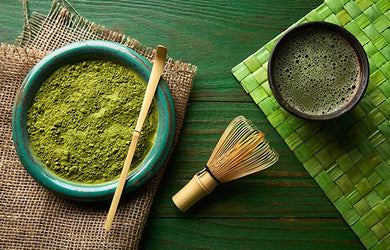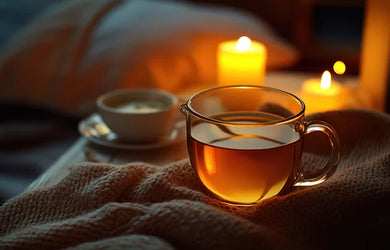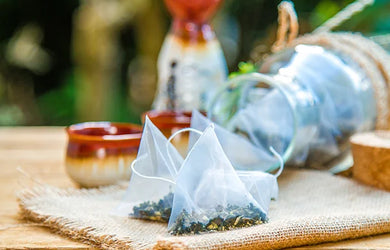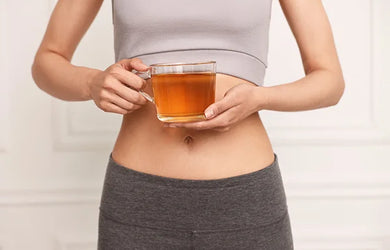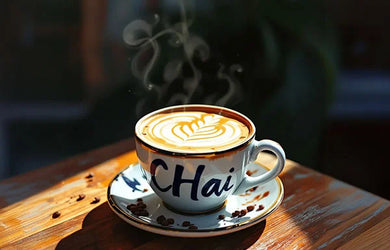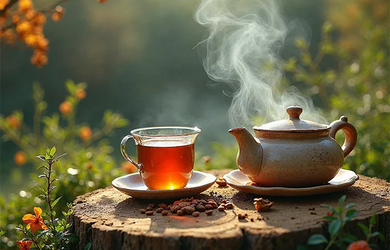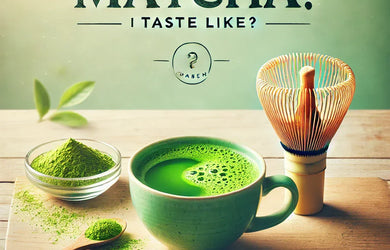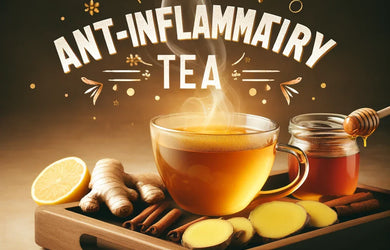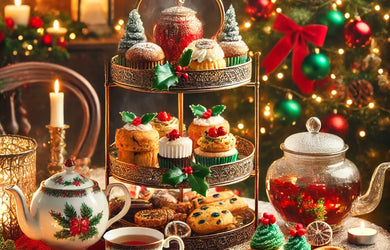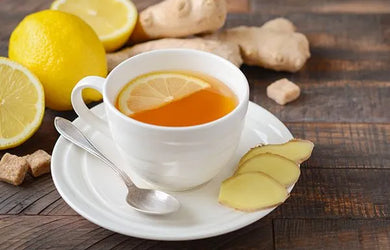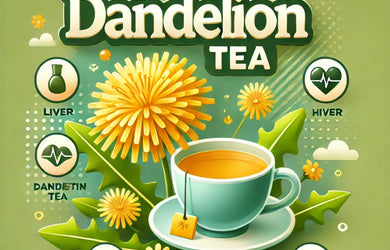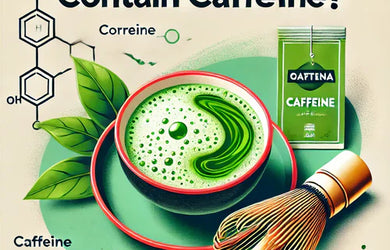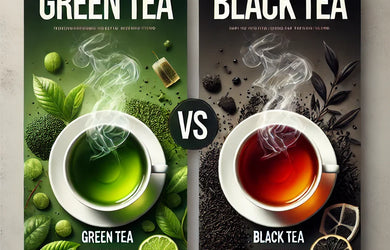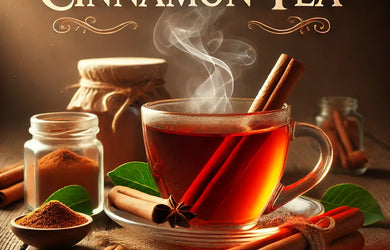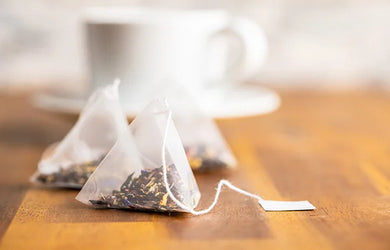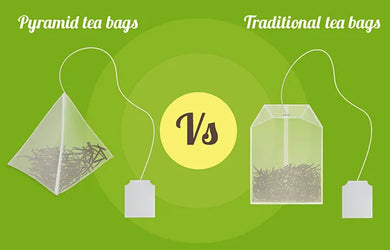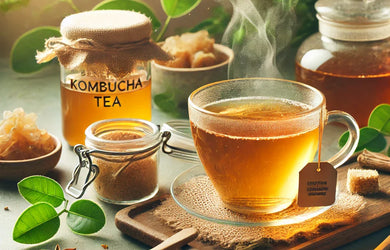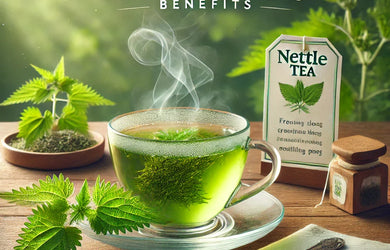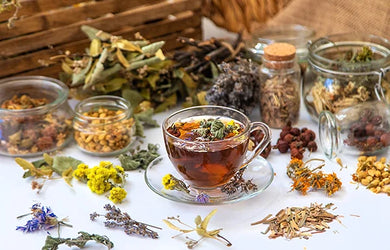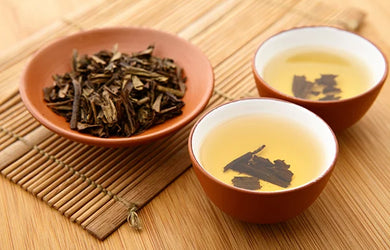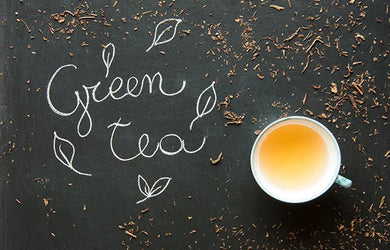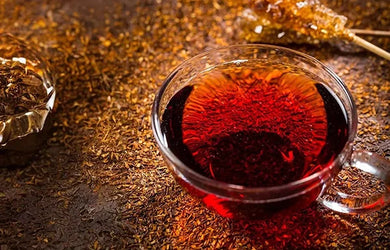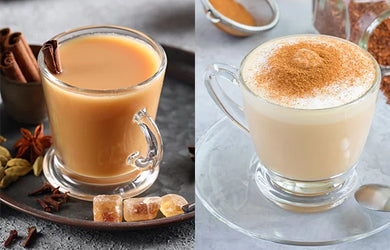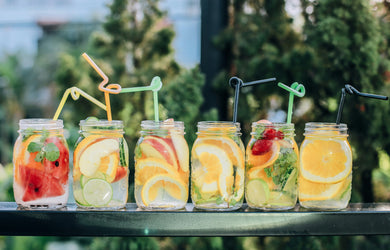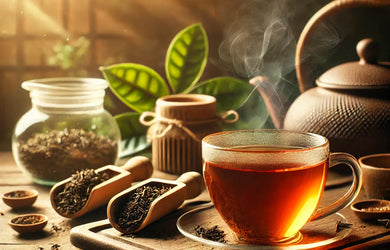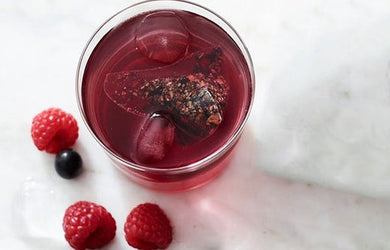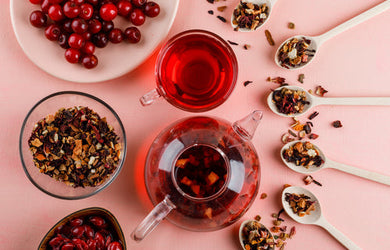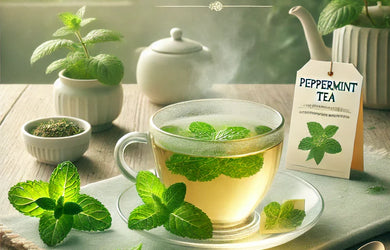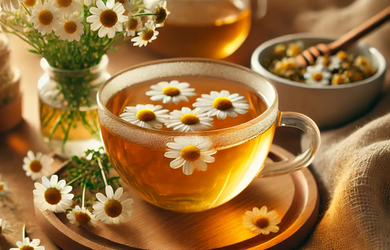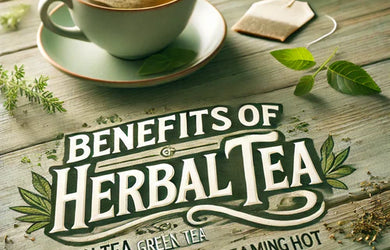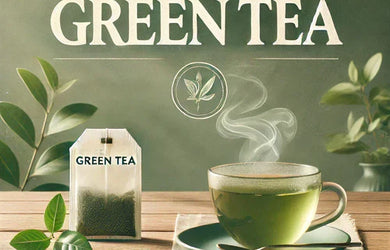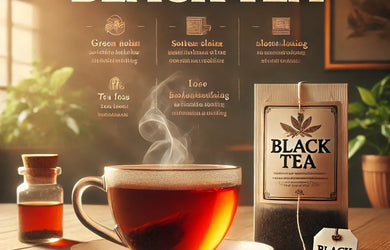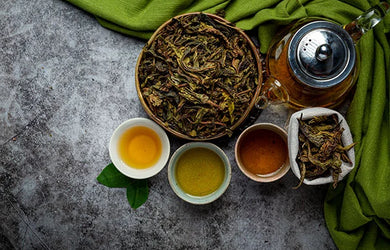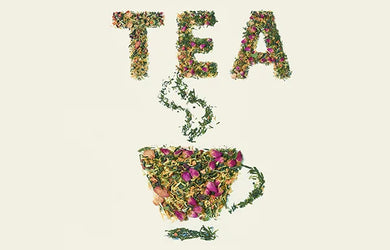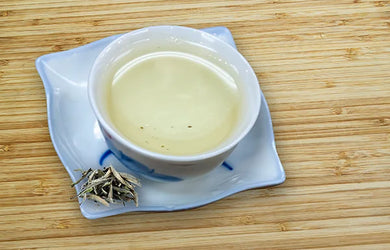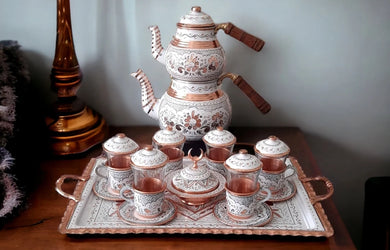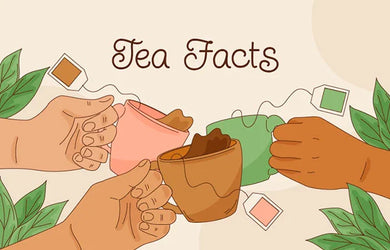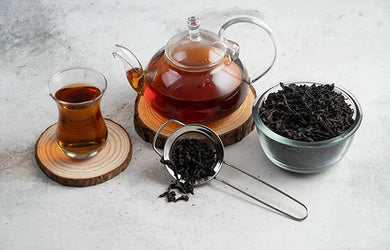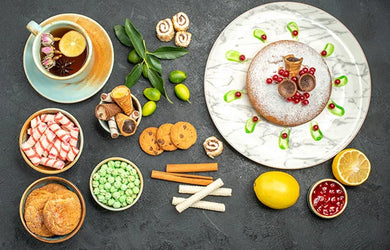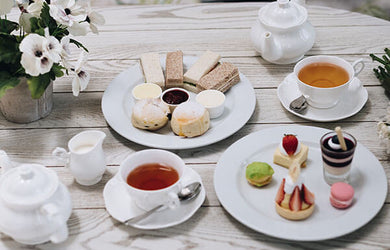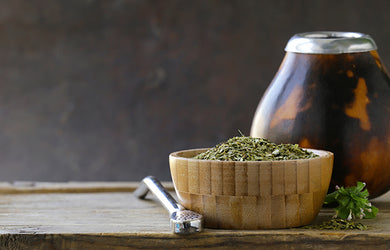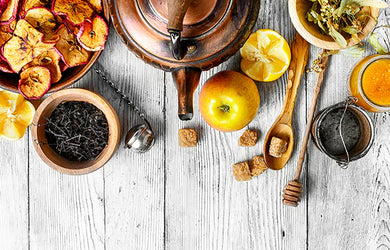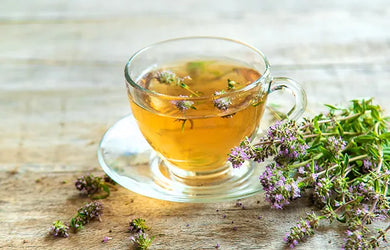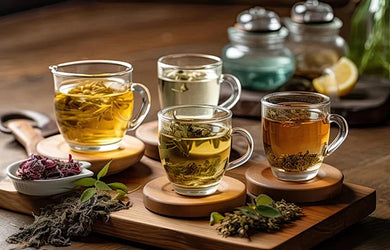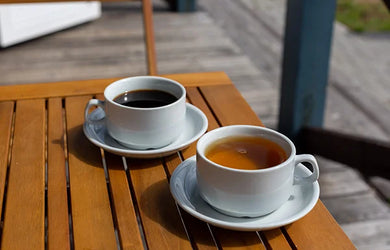while white tea may not have basked in the limelight, it has certainly piqued the curiosity of many tea lovers, and rightly so. the world of this tea is full of fascinating facts and exquisite flavours.
did you know that to help this tea’s buds mature into leaves, tea plants give them an extra shot of glucose, creating a natural sweetness in the tea? but that's not all – to shield these precious buds from the sun and bugs, the plants clothe them in fine and tiny, silvery-white hair. if you guessed it, you’re right – that’s the very origin of the tea’s name.
what is white tea?
white tea is a gentle and delicate variety of tea that's cherished for its subtle and delicate flavours. it comes from the same tea plant, camellia sinensis, as green, black and oolong teas but undergoes minimal processing, which preserves its natural qualities.
what sets this tea apart is its young tea leaves and buds, harvested just before they fully open, usually for a few days each year. the limited harvest makes white tea a bit rare and extra special, especially for tea connoisseurs. once harvested, the leaves are quickly dried, preserving their natural characteristics, resulting in a pale, straw-coloured infusion with a remarkably subtle and slightly sweet taste.
in addition to a remarkable flavour, this tea is considered to have antioxidants. this unique blend of flavour and health benefits makes it an appealing choice for both – tea enthusiasts and health-conscious individuals.

types of white tea
white peony also known as bai mudan, is made from the buds and young leaves of the camellia sinensis plant. its flavour profile is characterised by a delicate, mellow and slightly sweet taste. it often has a mild floral aroma with notes of honey and a subtle earthiness.
silver needle (or baihao yinzhen) is a highly prized variety that’s made exclusively from the unopened buds of the camellia sinensis plant. it boasts a remarkably delicate, sweet and light flavour profile. the taste of this tea is often described as having subtle floral notes, a hint of melon and a refreshing quality.
long life eyebrow (also known as shou mei) is made from mature tea leaves and buds. it offers a heartier flavour compared to other varieties of this tea. its flavour profile is characterised by a mild, woody and earthy taste with a hint of sweetness and a light astringency.
tribute eyebrow (or gong mei) is crafted from more mature tea leaves and buds than silver needle or bai mudan. it offers a deeper and richer flavour profile, with notes of earthiness, a mild sweetness and a subtle fruitiness. this variety is known for its refined and complex taste.
brewing white tea
you have two options for brewing this tea, you can either brew it directly in a cup or make it in the traditional (gaiwan) style. let’s explore both the styles:

brewing in cup
heat water: water temperature is crucial for this tea – if it’s too hot, the delicate leaves get scorched. so, heat an adequate amount of water to about 71°c to 85°c only.
rinsing teacup: pour a small amount of hot water into your teacup, swirl it around and then discard the water. this preheating helps maintain a consistent temperature when you brew the tea.
measure the tea: add the right amount of tea leaves or tea bags to the cup (next section has more on this).
brewing time: you should steep it for about 2 to 3 minutes, to begin with, and then experiment with this time. that’s all there is to it!
traditional style
rinsing gaiwan: it translates to bowl with a lid – traditionally used for tea brewing. start by warming the gaiwan with hot water. swirl the water around and then empty the vessel.
rinsing tea leaves/ awakening the tea: take the appropriate tea quantity and pour it into the gaiwan and then, allow hot water to flow over the tea leaves (for unfurling). immediately discard this initial infusion or use this water to warm your teacup.
infusing: add hot water to the gaiwan to initiate the tea brewing process. for the initial steep, let it brew for approximately 20 seconds. that’s it! it’s ready.
multiple infusions: this tea allows for multiple infusions; just remember to steep it for longer in each subsequent infusion.
preparing of white tea
here are some key considerations to keep in mind before brewing this tea:
select high-quality tea: start with a premium quality tea as the quality of your tea leaves plays a significant role in the final flavour of your tea. apart from the quality, you must consider the variety also, as several types of white tea are available (check out some of the varieties we’ve mentioned above). if you’re new to this tea, consider trying out different varieties to determine which one you like better.
storage: ensure your tea leaves are stored in an airtight container away from strong odours, humidity and direct sunlight. proper storage preserves its freshness and flavours.
measure the tea: you'll need about 1 to 1.5 teaspoons of tea or 1 tea bag per cup (240 ml) of water. however, this can vary depending on the type of tea you use, and your taste – so adjust the quantity accordingly.
use good quality water: while hard water can lead to bitterness, overly soft water results in weak tea. use filtered water for the best taste and avoid letting water sit in the kettle for too long. the quality of water greatly influences tea's flavour; therefore purity, hardness and ph levels are essential factors to consider.
caffeine content in white tea
the subtle shade of this tea might deceive you into thinking that it's lower in caffeine than its counterparts. however, the truth may surprise you – the caffeine content in this tea is not low and exhibits considerable variation, with a single cup ranging from 6 to 75 milligrams. this wide spectrum is influenced by several factors.
however, rest assured that even within this broad range, this tea's caffeine levels remain significantly lower than those found in coffee. if you wish to enjoy it with reduced caffeine levels, proper brewing techniques will help you achieve that.
it's common for some of us to use water at a rolling boil or to steep the tea for extended periods, and that raises the caffeine content in the infusion. for a milder brew, go for water in the range of 71°c to 85°c or cooler, and remember not steep for long.
conclusion
as we draw our journey to a close, it's important to remember that there is a vast world of flavours and knowledge yet to be uncovered. while we trust your curiosity has found some satisfaction, this introduction merely scratches the surface of this fascinating tea. understanding correctly what white tea is and trying its different types and flavours call for further exploration.
so, consider this a promising start – an invitation to continue further and go deeper. it’s a certainty that the more you explore, the more you'll come to appreciate the delicate nuances and delightful surprises that this tea has to offer.
faqs on white tea
Q. what makes white tea unique compared to other teas?
A. this tea's uniqueness lies in its unusual harvesting and minimal processing. as far as harvesting is concerned, it's plucked from the tea plant before the leaves fully open, ensuring the young buds are adorned with fine white hairs. regarding minimal processing and unlike other teas, this tea remains unrolled and unfired.
Q. how do i store white tea properly?
A. to store white tea properly, place it in an airtight container away from light, heat and strong odours. basically, you must store it at a cool, dry and consistent temperature. the purpose of storing like this is to preserve its delicate flavours and aroma.
Q. what food pairs well with white tea?
A. since white tea has a light infusion, it pairs best with very subtle and delicate foods. you can go for salads without dressing or dishes with minimal seasoning. that works because this tea's natural sweetness is accentuated when combined with foods that are not sweet. for that reason, avoid fruit salads and heavy dressings.









